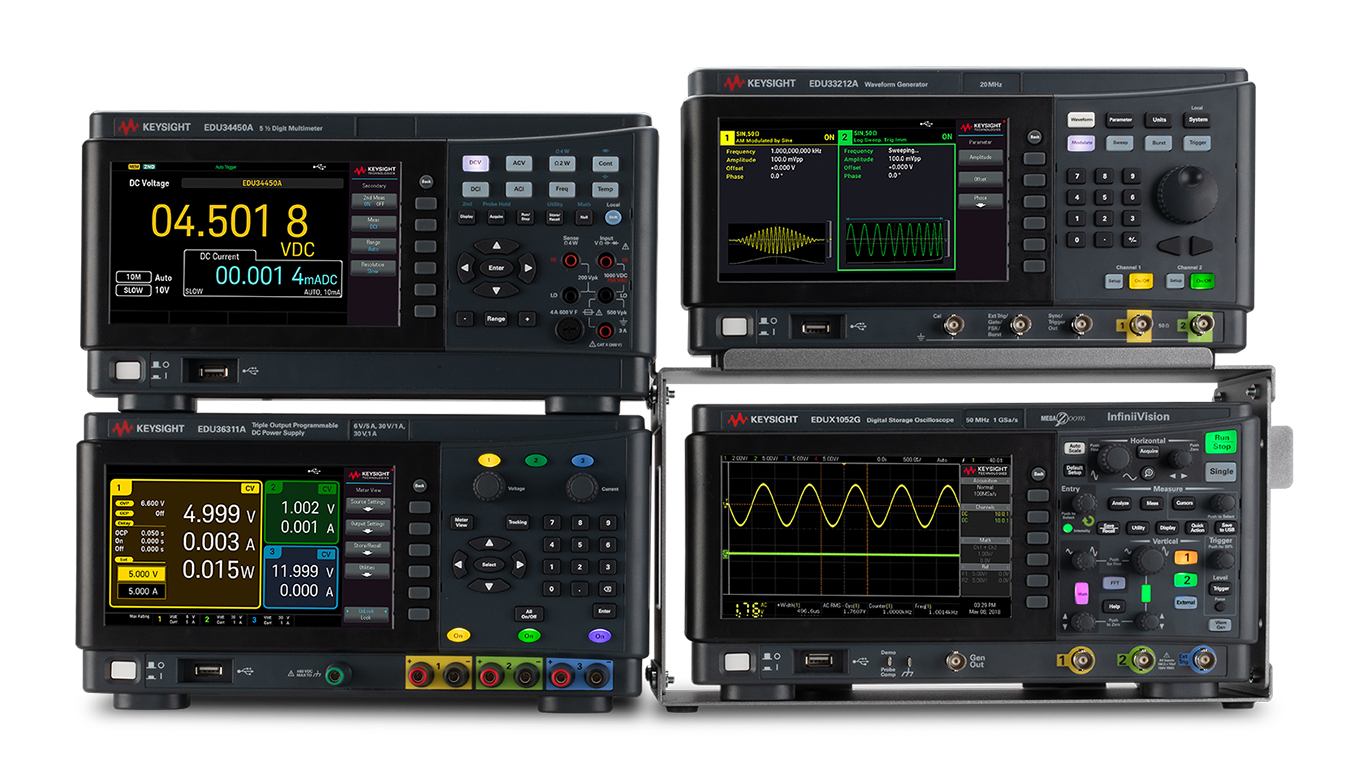Is your test bench still on mute?
An often-quoted speech by a machine tool executive began with, “Last year my company sold over 2 million quarter-inch drill bits. None of my customers wanted them. They wanted quarter-inch holes.” Likewise, test engineers need to know if their device is doing exactly what it should be doing. Test equipment is just the tool to get that job done. But like a dull drill bit, each piece of test equipment on the bench isolated on 'mute' obstructs engineers from getting their job done right. Wayne Mackey, Global Marketing Leader, New Product Introduction Launch Programs, Keysight Technologies explains.
Sharpen your test bench by intelligently sharing across equipment boundaries, automatically recording and analysing test data, and providing quick and easy Q&A support.
Can everyone see my screen?
The essential test bench is a power supply and function generator as sources, coupled with a DVM and an oscilloscope as receivers. They are the foundation of electrical engineering education and measurement, but not 'smart' on their own. On a smart bench, each piece of test equipment hardware connects seamlessly with other test equipment and uses smart bench instrument, laboratory, and remote learning software to communicate, eliminate mundane tasks, simplify complex settings, and facilitate remote collaboration.
An engineer must manually set up, measure, record, and analyse standalone test equipment results. In each of these essential processes missteps and inconsistencies can and do occur. But many parts of these processes don’t add any discovery value to the job that an engineer needs to do. They are predictable, rote, or recurring.
Smart power supplies and function generators communicate their status and settings to smart DVMs and oscilloscopes without compromising any creative or innovative elements of test. Smart DVMs and oscilloscopes interleave their data providing composite on-screen numerical and visual insights. Smart bench instrument software snapshots every setting and piece of data from every piece of equipment with the push of a button.
No smart test bench should be an island and no team member should have to work alone. The test group needs to see every setting, screen, and measurement - whether they are present at the bench or working from their home or dorm room. 'Hands-on' becomes 'sign-in' with smart bench remote learning software. Institutions and companies need to optimise equipment allocation and maximise up-time. Smart bench equipment communicating its status automatically and integrating it lab-wide with smart bench laboratory software for quick and accurate decisions eliminates laboratory leaders’ guesswork.
This session is being recorded
Connecting and sharing in real time is not enough. A smart test bench automatically stores, analyses, and synthesises test equipment data and transforms it for use in getting the test engineer’s and the test laboratory leader’s jobs done.
The engineer’s job is to know that the device under test is doing exactly what it should. That applies equally to students, hobbyists, and professionals. Data from early tests or courses feed into later ones. But data that early tests do not capture and store is useless later. Every test bench comprises sources and receivers. Smart bench instrument software enables smart DVM and oscilloscope receiver devices to automatically send all their data alongside their smart source device’s settings into the cloud. The software analyses bench-wide data history resident in the cloud automatically against known standard tests, customised sequences, and prior measurements.
The laboratory leader’s job is different, but equally supported by smart bench laboratory software. Detailed lab-wide equipment history from last year or last semester provide insights into allocations, utilisation, and uptime to achieve better performance. Out of date or out of calibration equipment obscures results and confuses learning. The big-picture view of the status of all equipment in the lab enables the leader to predict update and calibration issues instead of reacting to them. The laboratory leader uses smart bench laboratory software history data to justify new equipment purchases when it is time to expand.
Documentation is a necessary evil for engineers and laboratory leaders. Smart bench instrument software and smart bench laboratory software take that pain away by providing repeatable and professional composite overviews, charts, and tables. Reusable lesson plans correlate directly to specific test setups. Standard output report formats enhance consistent analyses and simplify grading or data review.
Questions answered in chat
A smart test bench is only as smart as its user’s ability to access its power. Intuitive interfaces and well thought out software go a long way in harnessing the power of a smart bench. But no artificial intelligence anticipates every issue. The solution is committed support from experts for student’s, engineer’s, and lab leader’s questions, independent of their experience level. Paraphrasing an old quip, 'If you think support is expensive, try ignorance'.
Support as an option results in too many users without the answers they need when they need them. Expert support leverages decades of experience and taps into the best source of information for a smart test bench - the people who designed the equipment and wrote the software. If your test bench equipment is on 'mute' from support, it’s time for a new smart bench.
Next slide please
If your ‘job to be done’ is to cut down a mighty forest, when should you pause to sharpen your axe? You can’t afford to ignore a bench full of old, disconnected test equipment that is perpetually on 'mute'. Competent test engineers and students may find a way to get the job or assignment done manually. But the price paid is in wasted time, error escapes, and higher total costs. Test equipment on 'mute' can’t keep up with better universities, competitors or with your student’s or customer’s longer-term demands. It’s time to sharpen your axe.

Figure 1. Keysight’s SmartBench Essentials test platform










